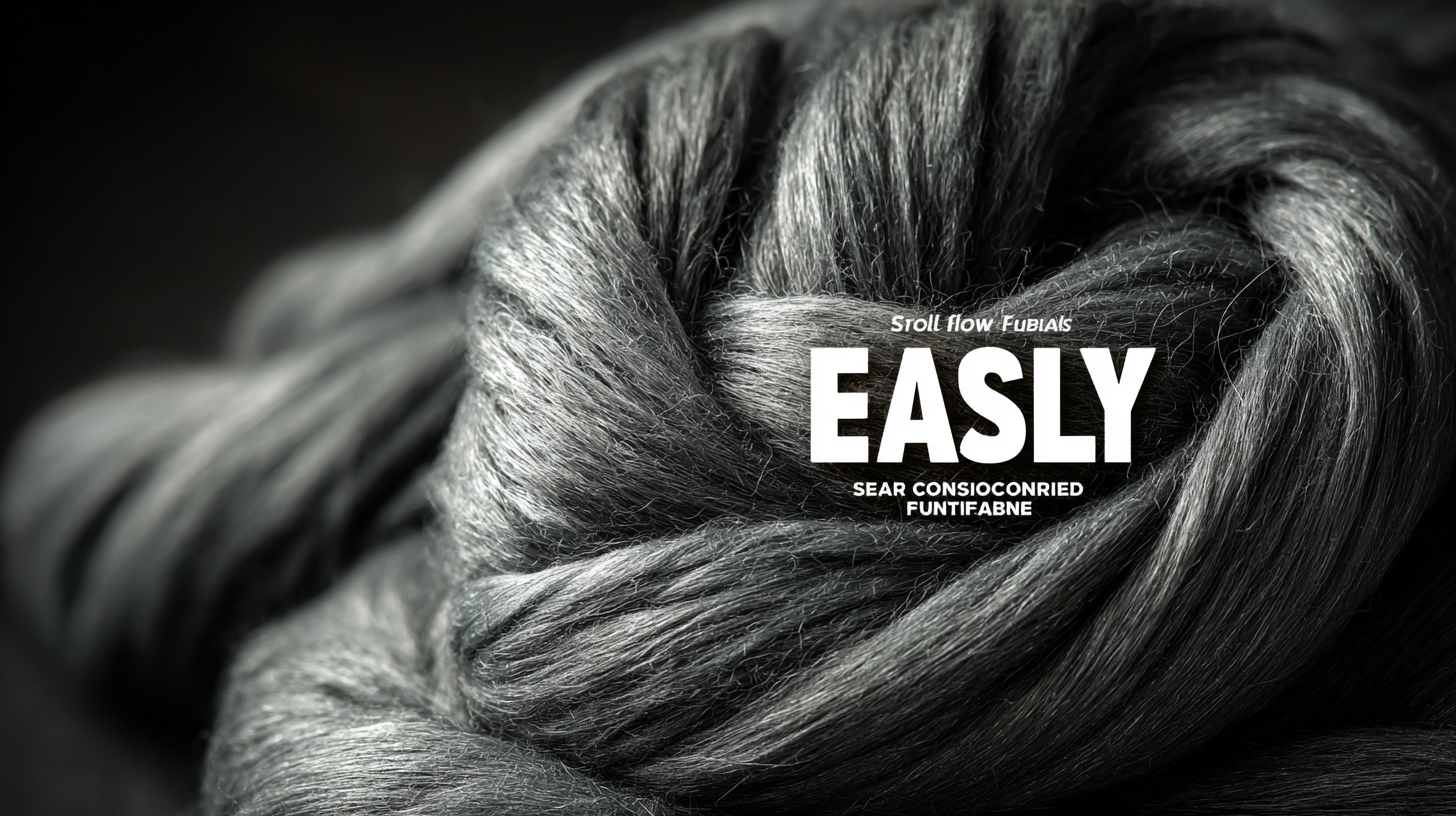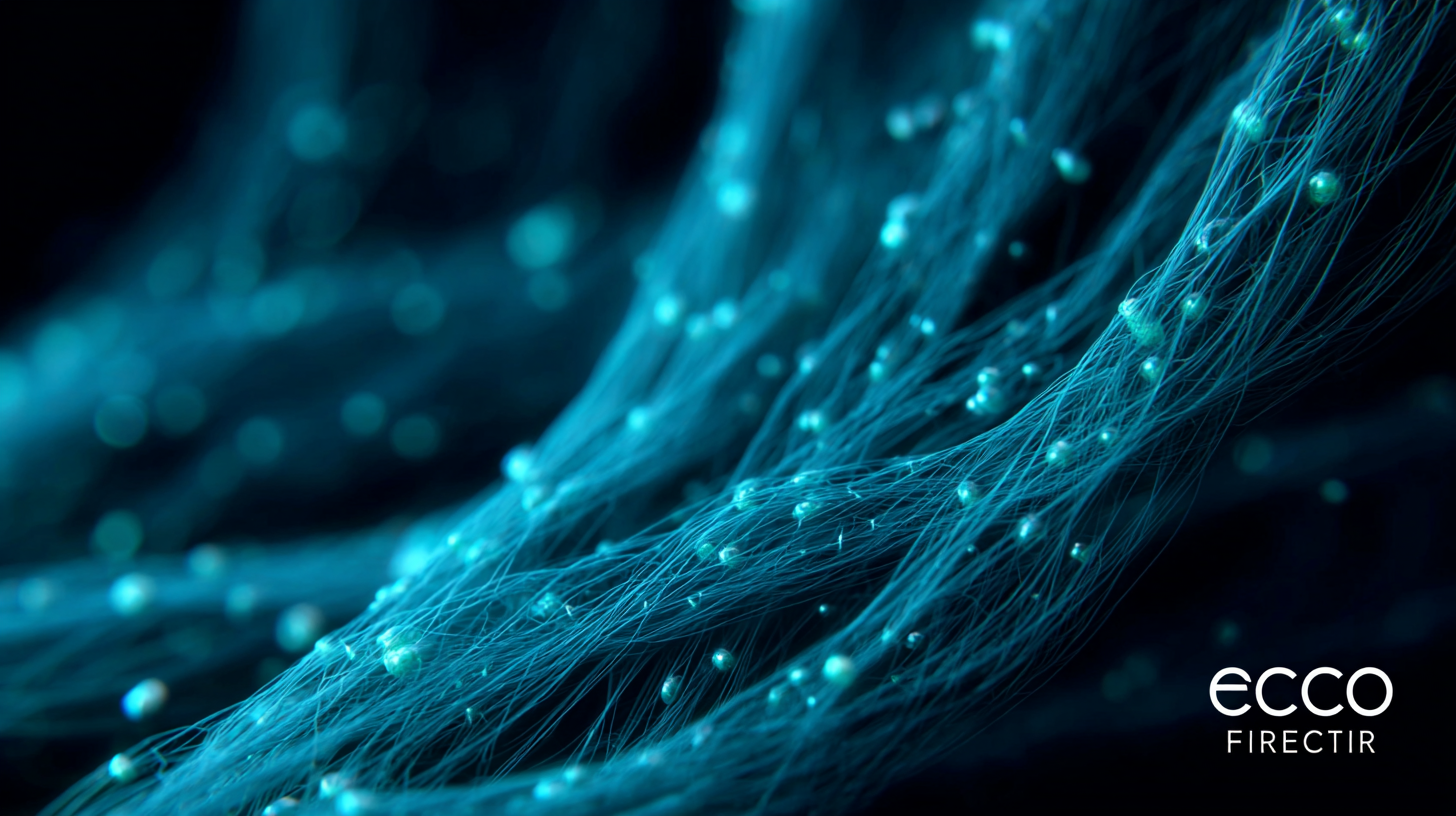
7 Reasons Why Best Hollow Conjugated Fiber is the Future of Sustainable Textiles
In an era where sustainability is at the forefront of consumer consciousness, the textile industry is undergoing a significant transformation. Among the innovative materials leading this charge is Hollow Conjugated Fiber. This remarkable fiber not only embodies eco-friendly principles but also offers exceptional performance characteristics that challenge traditional textiles. As brands and consumers alike search for alternatives that reduce environmental impact without sacrificing quality, Hollow Conjugated Fiber emerges as a viable solution.

This blog will explore seven compelling reasons why Hollow Conjugated Fiber is not just a trend, but a crucial player in the future of sustainable textiles. From its lightweight properties to its insulating capabilities, this fiber represents a harmonious blend of technological advancement and environmental stewardship, making it a game-changer for the industry.
Join us as we delve into the myriad benefits of this innovative material and uncover why it should be your go-to choice for sustainable fashion.
The Rise of Hollow Conjugated Fiber: A Sustainable Alternative in Textiles
The rise of hollow conjugated fiber marks a significant shift towards sustainable textiles, driven by increasing environmental awareness and technological advancements in fiber production. The global polyester staple fiber market, valued at USD 31.1 billion in 2023, is anticipated to grow substantially, reaching USD 45.43 billion by 2034. This surge highlights the growing recognition of sustainable alternatives, such as hollow conjugated fibers, which not only reduce waste but also offer improved thermal insulation and lightweight properties.

Furthermore, the market for low melting fibers, projected to reach USD 2.5 billion by 2025, underscores the expanding application of innovative fibers in various industries. Hollow fibers play a critical role in this evolution, as they can be engineered for specific applications, from textiles to nonwoven materials. The hollow fiber filtration market is also on an upward trajectory, expected to grow at a CAGR of 14.4%, reflecting the enhanced demand for sustainable and efficient filtration solutions. As consumers and industries seek greener options, hollow conjugated fibers are poised to take center stage in the future of textile manufacturing.
Global Market Trends: Projected Growth for Sustainable Fibers by 2025
As the global demand for sustainable textiles grows, the hollow conjugated fiber is emerging as a leading choice for eco-friendly fashion. According to market projections, the sustainable clothing market is expected to rise from $3.9 billion in 2025 to $9.4 billion by 2034, with a compound annual growth rate (CAGR) of 10.3%. This indicates a significantly increasing consumer interest in sustainable alternatives, which hollow conjugated fibers perfectly address due to their lightweight, insulating properties and recyclable nature.
Furthermore, the textile industry is undergoing a transformative shift, aligning with broader global trends toward sustainability. Reports indicate that major segments of sustainable fibers are projected to experience consistent growth, with the total market poised for expansion as environmentally-conscious practices gain traction. Just as in other sectors, such as the global fiber laser market—which is set to grow from $4.63 billion in 2025 to $10.75 billion in 2032 at a CAGR of 12.8%—the integration of sustainable materials like hollow conjugated fibers will be pivotal in shaping the future of textiles by 2025. These trends not only highlight the potential for hollow conjugated fibers but also signal a fundamental change in consumer preferences shaped by sustainability demands.

Environmental Impact: How Hollow Conjugated Fiber Reduces Carbon Footprint
Hollow conjugated fiber presents a revolutionary approach to sustainable textiles, significantly reducing the environmental impact of the fashion industry. One of its most remarkable features is its ability to provide excellent thermal insulation while being lightweight, which leads to reduced energy consumption during manufacturing and transportation. The unique structure of hollow fibers traps air, enhancing insulation properties and minimizing the need for heavy materials, ultimately resulting in a lower carbon footprint.
Moreover, the production process of hollow conjugated fibers often requires fewer resources compared to traditional fibers. Many manufacturers are transitioning to eco-friendly processes, utilizing recycled materials and non-toxic dyes. This change not only lowers greenhouse gas emissions but also promotes a circular economy. As consumers increasingly seek sustainable alternatives, hollow conjugated fibers stand out as a viable solution that aligns with environmental goals without sacrificing quality or performance in textiles.
Performance Benefits: Enhanced Durability and Comfort in Fabric Technology
As the textile industry increasingly embraces sustainability, hollow conjugated fibers are emerging as a game-changer in fabric technology, offering significant performance benefits. According to a report by Textile Exchange, the global market for sustainable textiles is projected to reach $8 trillion by 2030, emphasizing the industry's shift towards materials that not only reduce environmental impact but also enhance durability and comfort. Hollow conjugated fibers, known for their lightweight yet resilient properties, contribute significantly to the longevity of fabrics, resulting in reduced waste and longer-lasting products.
The comfort provided by these fibers is another significant advantage. Fibers with hollow structures provide excellent insulation while remaining breathable, making them ideal for activewear and outdoor apparel. The American Journal of Textile Science suggests that garments made from hollow conjugated fibers can reduce moisture retention by up to 30%, thus improving the overall wearing experience. This combination of performance durability and comfort positions hollow conjugated fibers as a frontrunner in the future landscape of sustainable textiles, responding effectively to consumer demand for high-quality, eco-friendly fashion solutions.
Performance Benefits of Best Hollow Conjugated Fiber
Circular Economy: The Role of Hollow Conjugated Fiber in Waste Reduction and Recycling
Hollow conjugated fiber is emerging as a pivotal player in the evolution of sustainable textiles, particularly within the framework of a circular economy. As the fashion industry grapples with excessive waste and environmental concerns, this innovative material offers numerous advantages. By incorporating hollow fibers into products, brands can reduce the overall weight of fabrics without compromising on performance, leading to lower energy consumption during transport and processing. This efficiency not only aids in waste reduction but also aligns with the principles of a circular economy, emphasizing reuse and recycling.
The unique structure of hollow conjugated fibers allows for enhanced moisture management and insulation properties, which prolong the lifespan of textiles and minimize the need for frequent replacements. This durability means that garments made from these fibers can be more sustainably enjoyed over time, fostering a shift away from fast fashion. Additionally, these fibers are often made from recycled materials, further supporting recycling initiatives. By prioritizing hollow conjugated fibers, the textile industry can reduce its ecological footprint while simultaneously embracing innovative designs that cater to eco-conscious consumers.



